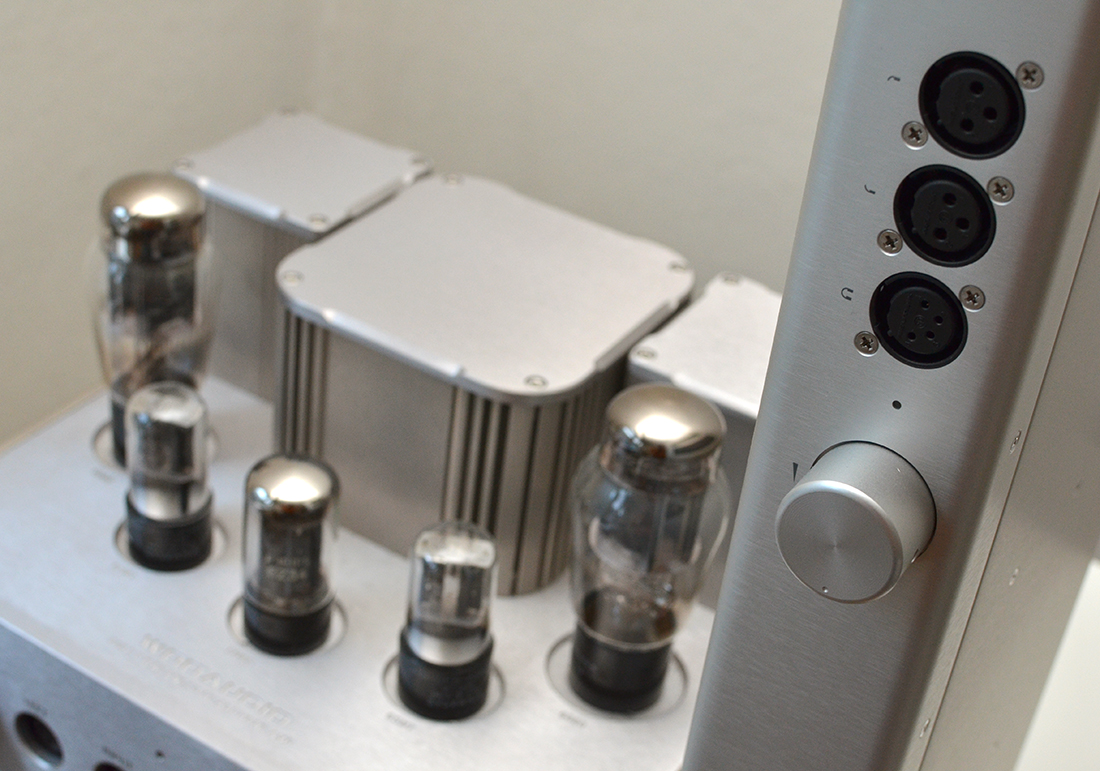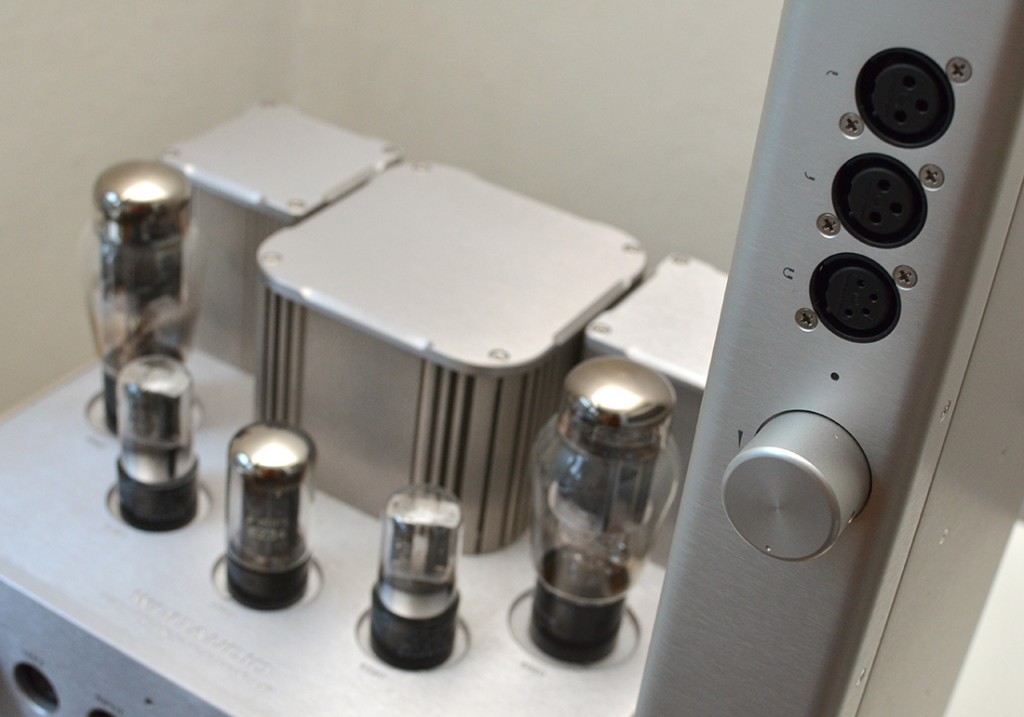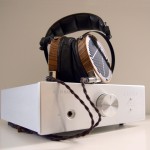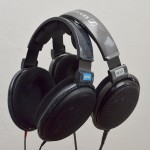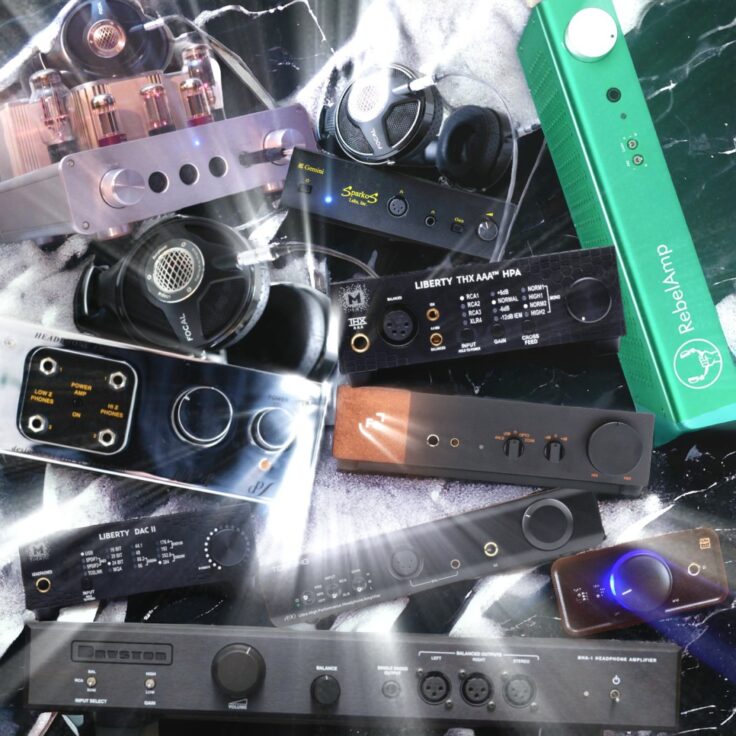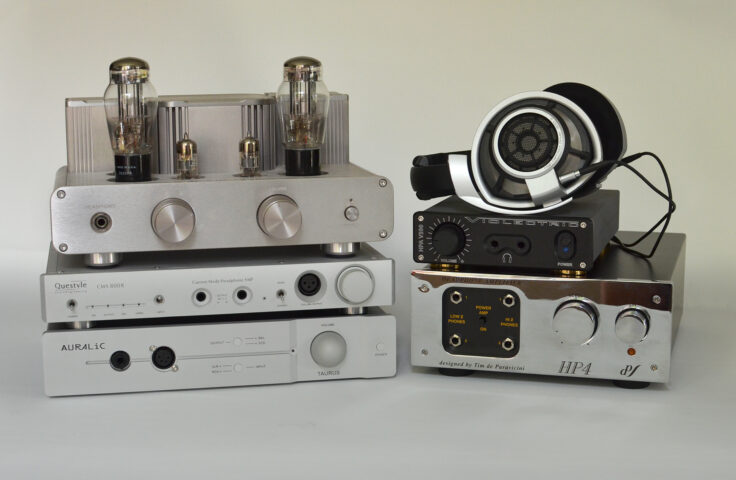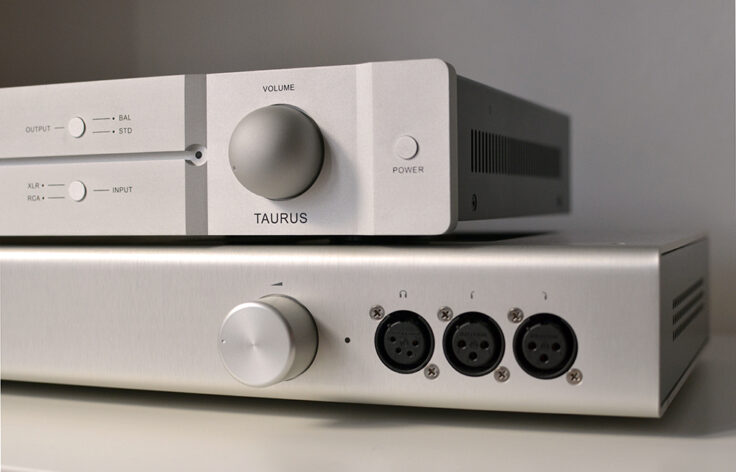Vintage tubes and output transformers or JFETs and MOSFETs? These two stunning looking amplifiers are both fully balanced, but in very, very different ways and obviously based on totally different technologies. They both looks the fabulous, but how do they compare when you give them a listen? Here is what I found setting them up side by side, listening to each of them track by track, using four great headphones, namely the Audeze LCD-3, the Shure SRH1840, the Hifiman HE-6 and the Sennheiser HD650. I will indicate preferences with advanced mathematical symbols: “A > B” means A is preferred to B, “A>=B” means a slight preference, while “A >< B” indicates that they are equally good but different.
Track by track comparison
Thomas Dybdahl – “This love is here to stay”
LCD-3. Things sound better separated with the WA22. Every instrument and vocal tone is more pronounced I also like the presentation, it feels more natural. The Mjolnir makes this track a bit flatter sounding. It feels like a slightly different mix, with less focus on the main instruments, but more on the background. The singer doesn’t stand out as much. Only plus for the Mjolnir is that the bass feels a bit more textured. The bass of WA22 is slightly bloated in comparison, though still great in a fuller way. WA22 > Mjolnir
SRH1840: I get the same result here, preferring the WA22 for the same reasons as above. WA22 > Mjolnir
With the HE-6 things change a bit. These headphones are hard to drive, but the WA22 does surprisingly well. It doesn’t have the tight grip and deep-end extension as the Mjolnir has with HE-6, so it is tempting to give the Mjolnir a win here. But then, if you can live with the slightly lesser bass quality, I think the WA22 gives a nicer presentation in the mids. WA22 >< Mjolnir
HE-500.The Mjolnir is nice with HE500, I just feel the WA22 presents a warmer, more dynamic and more spacious soundscape. WA22>Mjolnir
HD650 Mjolnir does a good job, but on the WA22, things open up quite a bit, and the sweeter tone makes WA22 the preferred one. WA22 > Mjolnir
Chick Corea – “Pledge for Peace”
LCD-3 Also here I like the more natural feel of he WA22, and things also sound better separated. The Mjolnir gets all the detail, but since nothing feels like it stands out, again the music sounds flatter. I don’t feel the WA22 misses any detail here, and still it is more engaging and natural. WA22 >Mjolnir
SRH1840 I get the same result, preferring the WA22 for the same reasons. WA22 > Mjolnir
HE-6 Again, the Mjolnir has the advantage in the lower regions with its tighter grip. Aoart from that, however, the WA22 still makes different elements in the music stand out more and offers the more natural tonality. Mjolnir might be called the more neutral, but the WA22 is by no means dark and muddy, it actually feels clearer overall than the Mjolnir. Not necessarily more detailed, but still. WA22 >< Mjolnir
HE-500 The WA22 is again more spacious, warmer. Though, the more polite sounding Mjolnir has an appeal and I find myself enjoying it quite a bit.In a way Mjolnir feels more effortless, but in a bit too polite way. WA22 >< Mjolnir.
HD650. This track has its charm on both amplifiers. With the WA22 you are closer to music, but the less up front style of the Mjolnir lets your attention focus more on the minute details. WA22 >< Mjolnir
Radiohead – Moring Bell
LCD-3 Also here, the Mjolnir is a tad flatter sounding. They WA22 just flows nicer. Mjolnir feels a bit too polite in comparison. WA22 > Mjolnir
Using the SRH1840 I get the same result. I also notice that the Mjolnir makes the vocals quite a bit drier. Some might like that, tough, I don’t.
With the HE-6, again the Mjolinir has the bass, the WA22 has the rest. WA22>Mjolnir
On the HE-500, the Mjolnier feels drier, the WA22 has more flesh. WA22 >Mjolnir
HD650 – I find Radiohead often a bit bright and Mjolnir doesn’t help out here: WA22 > Mjolnir
Jøkleba – Muggen Fallskjerm
LCD-3 Here it is harder to make a clear winner. This track has so clearly defined instruments, that the usual complaints aren’t an issue with the Mjolnir. Though still slightly flatter in it’s presentation dynamically speaking, it feels just a slight bit tighter. Constrained but tight. I have to call it a tie. WA22 >< Mjolnir
SRH1840 I slightly preferring the WA22 for the same reasons as usual. WA22 > Mjolnir
HE-6 Basically it is the same as on earlier tracks, and the natural tone gives the WA22 the advantage. WA22 > Mjolnir
Same goes for HE-500. WA22>Mjolnir
The Mjolnir makes the HD650 snappier, but harder sounding, I prefer WA22 which still is punchy, yet have more room for the delicate neuances. WA22>Mjolnir
Emerson String Quartet – Poco Allegro
LCD-3 Mjolnir has a slightly drier bite on the strings here, which gives it a bit more feel of immediate texture. At the same time the WA22 still has better separation and some of that warmth. Not my favorite piece for the LCD3, though. WA22>=Mjolnir
1840 I prefer the WA22 for its more natural presentation, but both amps are really engaging. WA22>Mjolnir
HE-500 The drier character of the Mjolnir plays very well with the HE-500 on this track. Mjolnir > WA22
HD650 sounds warmer and more delicious on the wa22 here. WA22 > Mjolnir
Olga Konkova – As Before
LCD-3 Once again, the WA22 is slightly more open and separated. WA22 > Mjolnir
SRH1840 I might be preferring the WA22 when plugging in the 1840, but with so slight a margin that I have to call it a tie. No significant differences to write about. WA22 = Mjolnir.
HD650 The less euphonic Mjolnir makes the HD650 feel more relaxed on this track, making it a nicer combo. Mjolnir > WA22
HE-6 the vocals are warmer, piano is clearer, yet it feels just as tight. Except again in the deepest regions of the bass, but that makes practically no difference on this track. WA22 > Mjolnir
HE-500 I feel I get a bigger soundstage the WA22. But again the the drier Mjolnir gives a stronger sense of detail in the mids. WA22 > Mjolnir
[tps_footer][/tps_footer]


